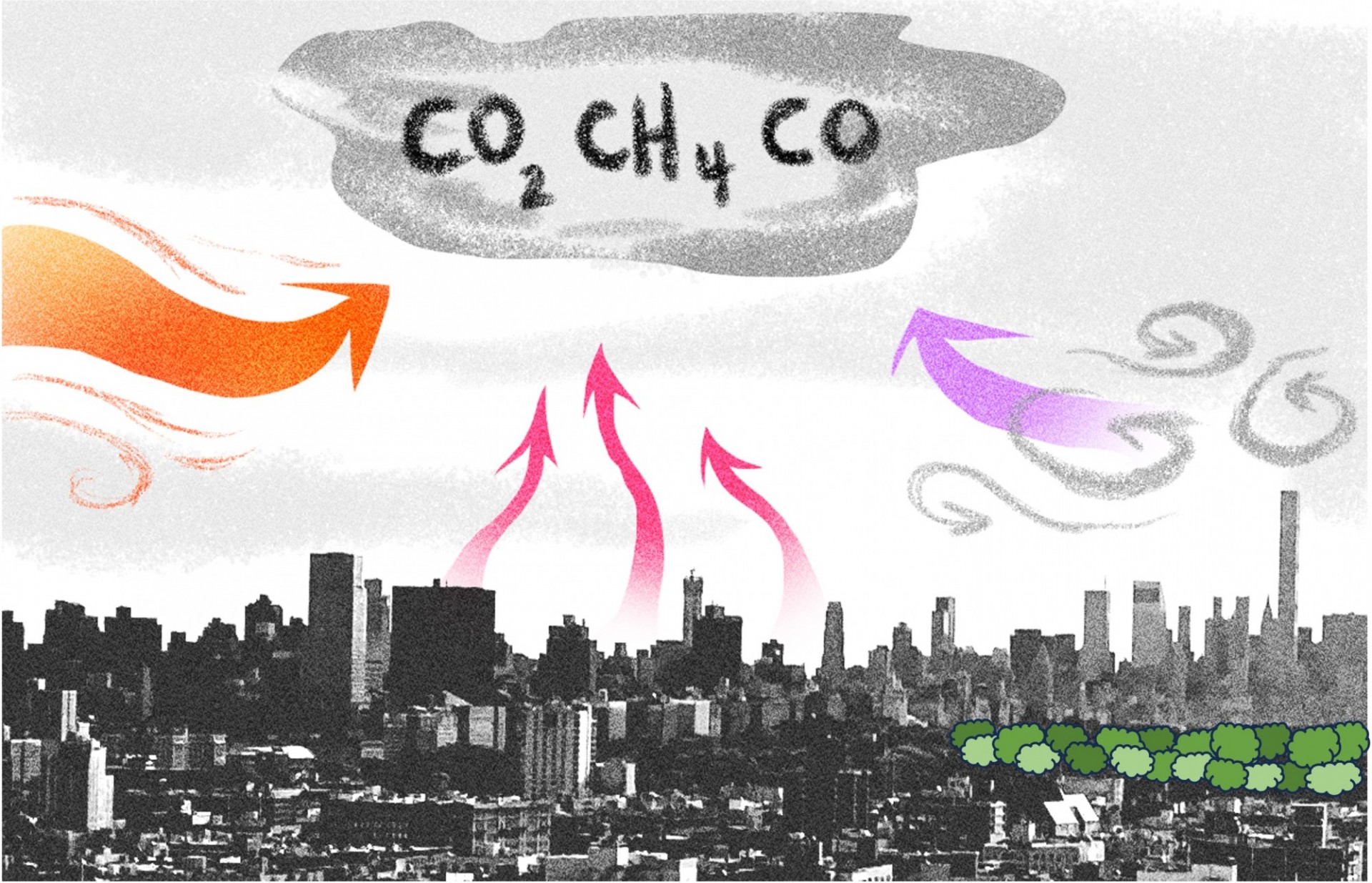
Collaboration with FROG-NY
We joined the NOAA funded project Fluxes of Reactive Organic Gases in New York (FROG-NY) team to measure greenhouse gases in Mineola, NY during summer 2023 and are planning again for Feb 2024.
Urban Methane
Our group measures methane and carbon dioxide concentrations at four locations around New York City.
Biogenic carbon in NYC
Vegetation across New York City and some densely populated adjoining areas has found that on many summer days, photosynthesis by trees and grasses absorbs all the carbon emissions produced by cars, trucks and buses, and then some. The surprising result, based on new hyper-local vegetation maps, points to the underappreciated importance of urban greenery in the carbon cycle. The study was published in the journal Environmental Research Letters.
Anthropogenic carbon in NYC
Globally 70% of carbon dioxide (CO2) emissions are from urban areas. CO2 it is emitted from the combustion of carbon based fossil fuels in vehicles, power plants, generators, concrete plants, etc. CO2 is also is taken up by trees and respired from soils in the city.
Local Law 97 will require dramatic cuts in carbon emissions from buildings in NYC over the next few years.
We are measuring CO2 around the city to track those changes.
Measuring ethane in a polluted urban environment
We conducted a comparison of three methane/ethane gas analyzers at our CUNY ASRC field site in February 2022. This comparison tested the stability and precision of an Aerodyne Research Instruments Quantum Cascade Laser/Interband Cascade Laser (ARI SuperDUAL), an Aeris Technologies Ultra CH4/C2H6 (Aeris MIRA Ultra), and a Picarro G2210-i Cavity Ring Down Spectrometer (G2210-i). We recommend the Aerodyne SuperDUAL for its high precision, and the Aeris MIRA Ultra for its low cost and small size.